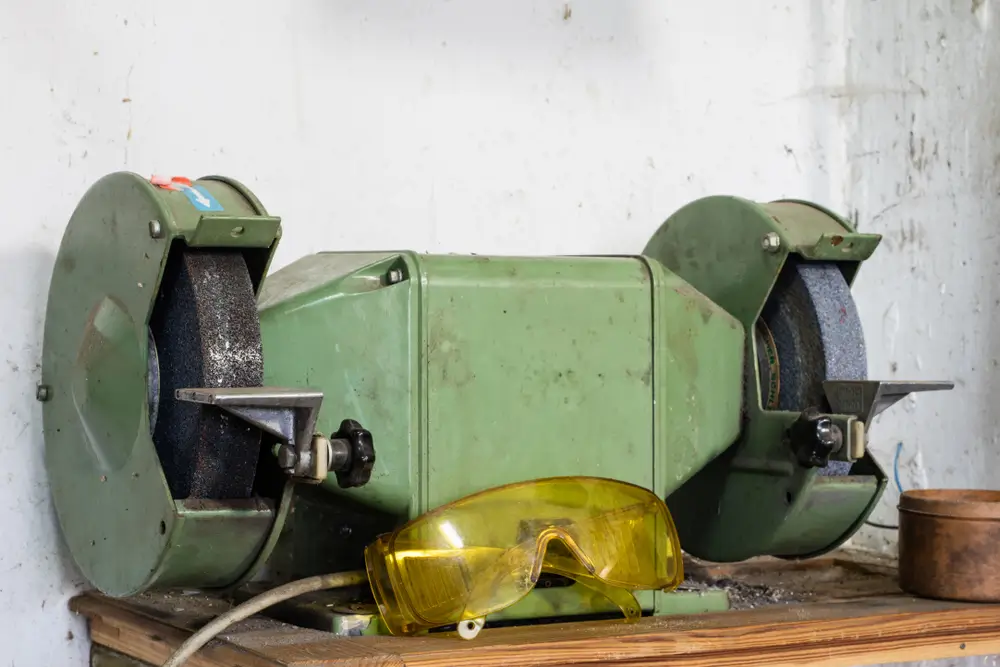OSHA Grinder Safety - Bench & Pedestal
Introduction
Bench and pedestal grinders are common tools in many workshops and maintenance areas. These machines bring high-speed rotating wheels that can cause serious injuries if not used properly. The Occupational Safety and Health Administration (OSHA) sets clear rules to protect workers who use, maintain, or service these grinders. This guide outlines OSHA’s key requirements in simple, easy-to-understand language.
1
Training for Users and Maintenance Staff
Before anyone uses or maintains a grinder, they must receive proper training. Training must cover:
Safe work methods, how to start, stop, and operate the grinder safely.
• Wheel speeds, dressings, and tests.
• Hazards like flying debris, broken wheels, or sparks.
• Required protective gear, eye protection, face shields, and sometimes aprons or gloves.
OSHA says workers need both classroom instruction and hands-on practice. They should also show they understand how to work safely. Refresher training is necessary if someone hasn’t used grinders recently or after near-misses or injuries.
2
Guarding the Grinding Wheel
OSHA requires grinders to have fixed and adjustable guards around wheels. These guards reduce exposure to rotating parts and contain fragments if the wheel fails. Before use, the work rest must sit close to the wheel, within 1/8 inch, to prevent objects from being pulled into the gap. The adjustable tongue guard above the wheel must also be within 1/4 inch.
If guards are missing or gaps are too large, grinders are considered unsafe. The user must stop work and report the issue immediately, until repairs are made.
3
Proper Wheel Installation and Inspection
Grinding wheels are fragile and can shatter under pressure. OSHA requires:
Inspecting wheels for cracks, chips, or damage before mounting.
• Performing a ring test, lightly tapping the wheel to hear a clear tone indicating no cracks.
• Mounting the wheel correctly on a clean, flat flange.
• Tightening the wheel nut snugly but not overtight.
Grinding with a damaged wheel or loose mounting can cause the wheel to explode, spraying sharp fragments at high speed. Regular checks are essential for safe operation.
4
Wheel Balance and Run-Out Limits
Imbalanced wheels vibrate dangerously and can cause poor grinding results. Before each use, the side of a mounted wheel should be checked: it should run true with minimal side-to-side movement. Any vibration must be corrected by replacing or dressing the wheel. OSHA guidelines require running new wheels at operating speed in a guarded enclosure for at least one minute before use, letting any hidden defects reveal themselves safely.
5
Personal Protective Equipment (PPE)
OSHA requires operators to wear basic PPE with grinders:
Eye protection, safety glasses with side shields and a full face shield.
• Hearing protection where noise levels are high.
• Proper clothing, long sleeves and no loose sleeves or jewelry.
• Gloves only if they do not pose an entanglement hazard.
Additional protection may be needed when grinding sparks or metal particles, leather aprons can help. PPE must be in good condition and worn correctly.
6
Work Surface and Work Rest Requirements
The work rest provides a stable surface for holding workpieces during grinding. OSHA requires that the work rest is:
At all times within 1/8 inch of the wheel.
• Rigidly secured to prevent movement.
• Kept flat, clean, and rounded to match the wheel surface.
If the rest is too far, workpieces can be pulled into the gap and break the wheel, or pull the operator forward, risking facial contact with the wheel. Observing this gap regularly is critical.
7
Tool Rest and Tongue Guard Maintenance
Both tool rests and tongue (upper) guards help prevent accidents. OSHA requires inspections to ensure:
Guards are properly attached and provide coverage.
• Guards are free of damage or wear.
• Adjustments are made before starting work.
Operators must check guard condition and setup before each use, and report any issues. Ignoring guard requirements can lead to serious injuries.
8
Safe Use of Portable Grinding Attachments
Some grinders accept attachments for specialized tasks. OSHA treats these the same as wheel grinders. Operators must:
Install attachments according to instructions.
• Have guards in place for attachments.
• Conduct training specific to each attachment.
The same PPE and inspection rules apply. Even with attachments, OSHA’s core safety principles remain in place.
9
Grinding Area Cleanliness
Sparks, metal dust, and fragments are part of ordinary grinding work. However, OSHA requires that areas be kept clean. Metal trash, dust, or flammable materials should be swept up promptly and disposed in covered bins. Any flammable liquids or paper near the grinder needs to be moved away. Clean floors reduce tripping hazards and fire risks. Proper housekeeping contributes to overall grinder safety.
10
Regular Equipment Maintenance
Grinders, like any tool, wear out over time. OSHA expects maintenance to include:
Wheel dressing to remove embedded particles and level the surface.
• Check bearings, shafts, and spindle alignment.
• Inspecting guards, rests, and shields regularly.
• Following a maintenance schedule documented in logs or checklists.
Routine care keeps grinders safe and functional, delaying maintenance raises risks and increases wear.
✓
Conclusion
OSHA sets clear rules so bench and pedestal grinder operators can work safely. Training, guards, wheel checks, PPE, and housekeeping are key parts of a safe grinding environment. When anyone spots a missing guard, damaged wheel, or unsafe work posture, work should stop until repairs or adjustments are made. By following these practical steps, operators avoid injuries and protect everyone in the workplace. Regular attention to these basic rules saves lives and keeps operations running smoothly.
If you’d like a printer-friendly compliance checklist or visual guide for operator training, just let me know!



